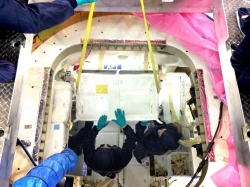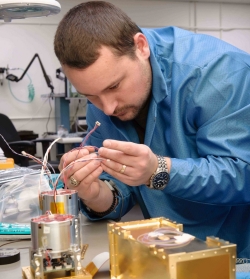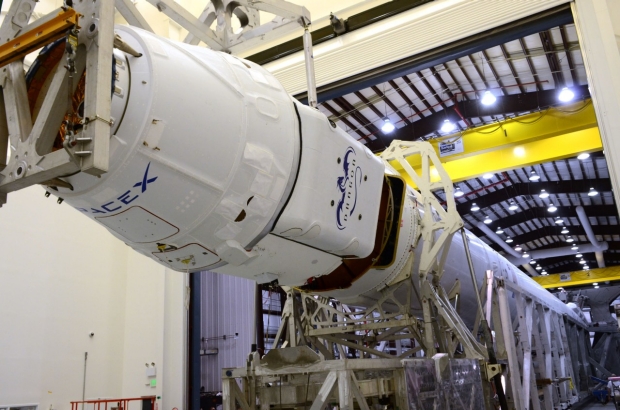Jay Kim, Head of Marketing and Business Development Head of Marketing and Business Development at Business Center OLED, Philips’ OLED lighting division shares in this blog entry how OLEDs are making their ways into outer space and everyday lighting applications.
 |
|
A space ship being loaded with cargo. (All photos courtesy of Philips) |
When 120 years ago in a small village in Holland, Anton Philips marveled at the invention that was to transform the world, I doubt even he realized that one day his company would go into space. But that is the latest, most extraordinary journey undertaken by this company, in a satellite powered by NASA. For we are once again molding the future with an innovation that might seem like science fiction but is, in fact, on the verge of changing all our lives. The OLED (organic light emitting diode) is a bulb so thin and light that it can be installed anywhere, without releasing the harsh heat that is a characteristic of even the most modern light bulbs. Before we can understand how it will change our everyday lives, let’s first go back into space. American scientists wanted to conduct biological experiments in a satellite to analyse the growth of spores in space.
 |
|
Spacecraft in the preparation stage. |
And they needed an embedded set of lights that wouldn’t weigh much, that would release very gentle light but wouldn’t inflict unnecessary heat on to the spores and thus ruin the experiment. Which is how Philips became a space-age business! Back on Earth, the OLEDs (the ‘organic’ by the way is because the materials are made from carbon compounds) are already proving just as revolutionary. They are just 1.8 millimetres thick and they emit light diffusely, over their entire surface, which is far different from fluorescent tubes, for instance, or the classic light bulb where light comes from a point source. The current flows through one or more extremely thin semiconductor layers positioned between two electrodes. When the electrodes are energised, current flows through the organic layer packet causing it to emit light, so reducing the cost and environmental impact of lighting and ensuring the sustainability of the innovation. Philips-OLED-Space
 |
|
A person working in a lab. |
So far, OLEDs have been at the centre of art exhibitions and design installations but soon, because of their unique properties, they will change the way we live. We will be able to hold them, they will light our bookshelves without damaging the paper, kitchen cabinets will have them embedded and there’ll be no cosmetic damage, household bills will be cheaper because less energy will be used, there’ll be less danger of a fire being started if a lamp is knocked over, and we’ll be able to light our homes and offices in any colour we want. We can have luminous wallpaper, windows that shine with soft daylight even at night and clothes that will have embedded lights within them – with no damage to fabrics. Plus, the light itself will not be the sometimes harsh light we are used to now; it will be diffused. It’s like the sun – looking in the sky, the light is pleasant but when you stare straight into the sun it can hurt the eye. And that’s the same with the OLED – it’s like looking into the sky, not the sun. It really is an entirely new quality of light. We always speak about the evolution of lighting, but it’s important to remember that the past is not extinct. The OLED represents an upgrade – a revolutionary one, to be sure – but an innovation that builds upon what we have already achieved as a company. And one which we believe will benefit not just consumers but all of society - because OLEDs are power-efficient, they will help to protect the environment and our planet’s precious resources. By 2030, we hope that, with the right partners in business and government, this brand of digital lighting will have replaced incandescent across the world. Because they can be manufactured into different shapes and patterns, they will be integrated into all manner of surfaces that we currently consider to be heat-sensitive. It’s a bold aim but then Anton Philips was just as bold when he announced to the world that his invention would change society forever. It did, and the company he founded will continue to do so for many generations to come.
 |
|
A spacecraft seen up close. |















